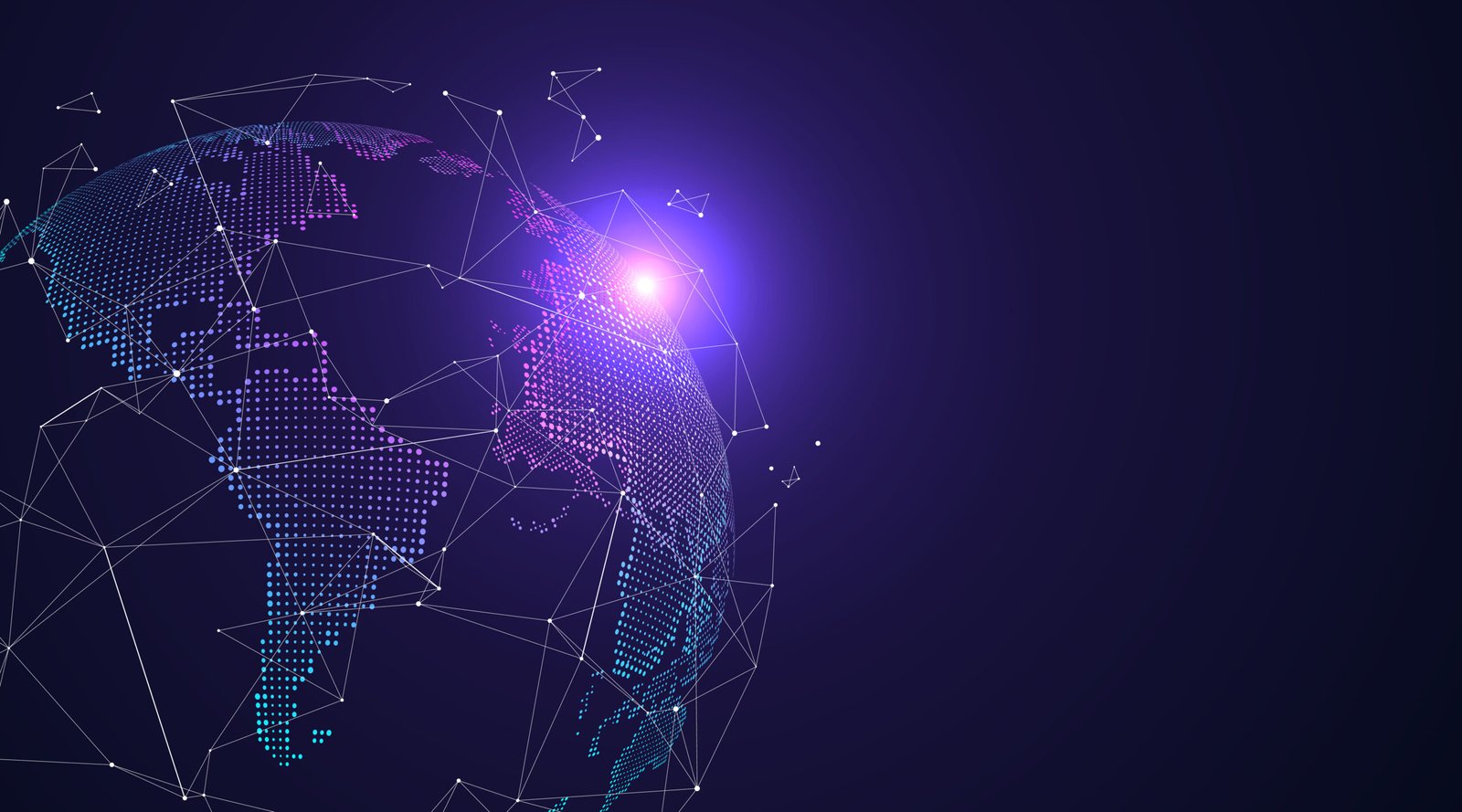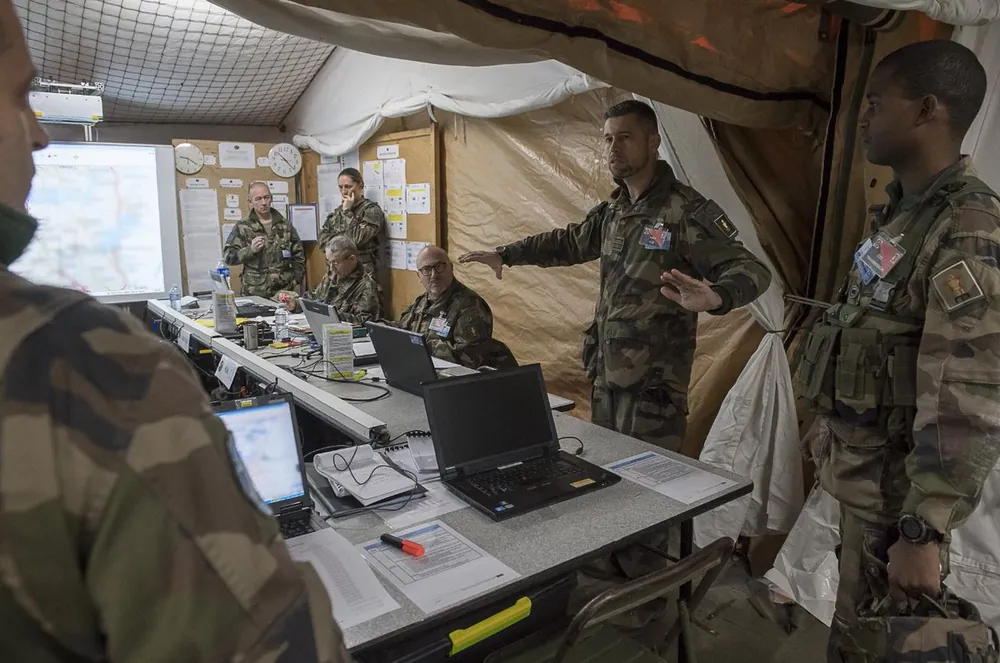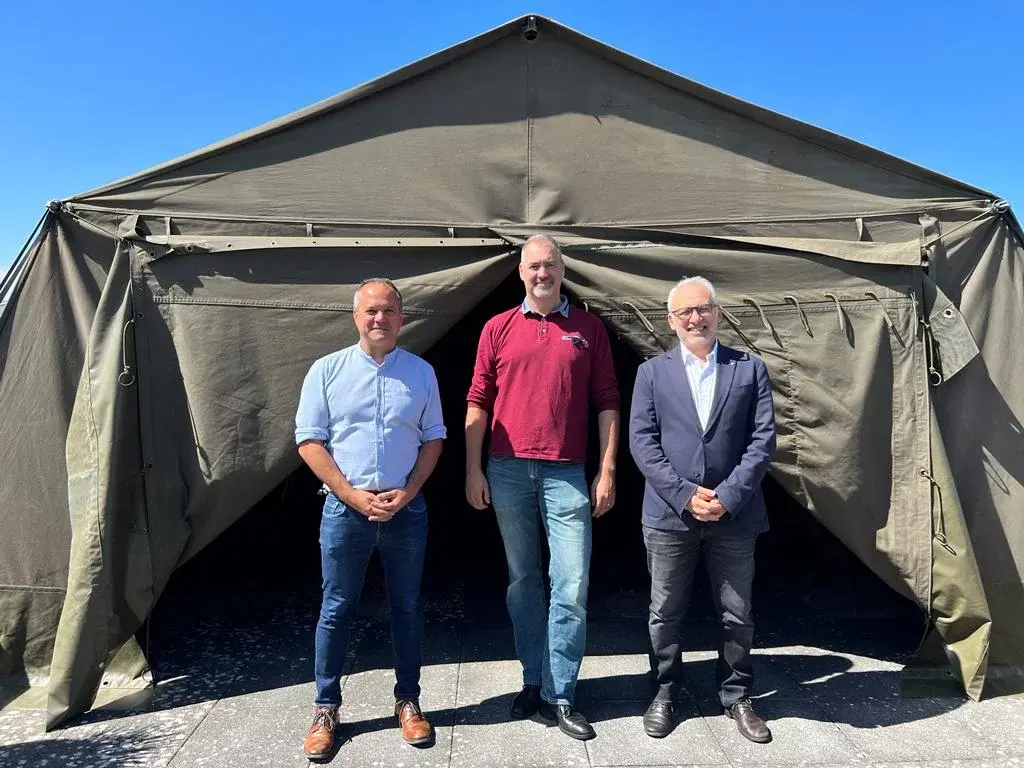
Oledcomm's LiFi solutions tested during NATO exercise
Read LCL Henk Lourens' interview about Oledcomm's LiFi technology solutions tested during the exercise NOBLE JUMP (NATO).

Oledcomm's LiFi technology solutions, have been tested during the exercise NOBLE JUMP (NATO) in Sardegna, providing a wireless, high-speed and secure optical connectivity. In this interview the LCL Henk Lourens, pilot of this test, is describing the reasons why this technology has been tested and its interest for the armed forces.

Can you provide some background information about your role in the military?
Henk: Currently I'm the S-3 operations officer within bi-national Signal Battalion in support of 1GNC, which means that my branch is planning, coordinating, and executing the CIS operations for the corps headquarters.
And how long have you been serving the military and what are your primary responsibilities?
Henk: I've been in the military since 1996, so close to 27 years. And my primary responsibilities have been from platoon commander to company commander. I've also been part of a testing department inside of the Army command, so I've been running on both worlds, the operational side, as well as the building and testing part of the CIS systems.
In that environment, have you had any experience about or exposure to LiFi technology in your military operations ?
Henk: I haven’t had any experience with LiFi until a year or a year and a half ago, while we were looking for solutions for some of the issues we had building up our command posts. Of course, we have been working with a lot of equipment over the last 20, 25 years. Equipment in the military usually stays in there for 30 or 40 years before we look into innovations. But the world around us is changing in such a fast way that we had to refine our capability of being flexible and innovative. So we have sat down with our Dutch organization, Military Innovation, By Doing (MIND). And because we are binational with the Netherlands and Germany as framework nations, the Cyber Innovation Hub (CIH) was also involved. We sat down together in workshops to define our needs, in what directions we had to innovate. And we found out that our networks are starting to become more and more complex. Also security is starting to become more and more complex, and the people we need to configure and maintain this are getting less available because they have to know everything about networking and services. As soon as we train them, they are immediately being bought by commercial companies because of their added value on the commercial side. One of the spin-offs of the changes in our line of work is, that if you look at the Ukraine conflict, the time to target is 10 to 15 minutes, meaning that we were too slow in our build up phase and we were looking to for ways to reduce our cabling times. Cabling every single workstation in the headquarters of 200, 300 workplaces takes a lot of time Changing this infrastructure also takes a lot of time. So this is where we were assisted by MIND and CIH with commercial off the shelf solutions. And this is where I found the LiFi technology as one of the options to reduce our cabling times and create more flexibility in setting up our networks.
What was the idea to address these challenges before ? Are there limitations or drawbacks to the existing solution used in comparison to LiFi?
Henk: There are pros and cons to both. In the in the traditional sense, people regard cables as more secure because the data is encapsulated in a piece of copper or in a fiber optic, and it can't travel outside. And every technology that emits energy is detectable or vulnerable in this respect. So we have to find a middle ground between the vulnerabilities of the technology on one hand and the pros of the LiFi technology on the other hand. So if we compare flexibility and easy deployment to security, we have to find out what is acceptable and what is not.
What are your thoughts on the potential benefits of LiFi technology for the military? Can you envision any specific scenarios where LiFi could be advantageous? I would say,of course, about what we could call “deployability” and, of course, discreet communication.
Henk: It is one of the lessons that we have been taught again in the war in Ukraine, because they are not new. We have seen them in World War I, World War II and in conflicts all over the world. The capturing of information that is in the air, in the electromagnetic spectrum that is propagating over quite a big distance is a vulnerability of any armed force. So mitigating this while being able to communicate or share data over short distances in a secure and discrete way, is one of the primary advantages of lifi in my opinion. As long as we can convince people that the data embedded in light doesn't travel for billions of years and is still reproducible after that, LiFi should be more and more accepted as a new and secure means of data communication. .
Can you share any specific operational or environments with reliable, secure, unhackable and discreet wireless data transfer where all this is crucial in terms of the environment? We talked about tunnels, for instance, is there any other environments ?
Henk: If I look at this from the military perspective, security is related to the value of data. And depending on the type of data, the value is depending on time. So if I, for instance, tell you that I'm two meters away from you in the woods and I would share this over radio, this information is valuable for maybe 15 minutes because after that we are already in a different location. But the higher up you get in the military organization where you meet staff elements and where we are planning bigger operations, this value becomes higher. Therefore the need for security you have to incorporate into your C2 systems, to secure the integrity of this data becomes higher. in this perspective LIFI can be very beneficial, for instance, in Vehicle to Vehicle communications or Vehicle offload where you offload data to a standing infrastructure (Vehicle to infrastructure). But if you start using it in command posts, you have to be really aware that the data flow over this LiFi becomes a high value target for the opponent. And this is where security comes into place.
How important is speed and bandwidth in this operation? Are there simulations where conventional communication methods fall short ?
Henk: Bandwidth is slowly being more and more recognized as the scarce good in military operations, especially for long distance connectivity. As long as you stay in a bubble, concentrating in a small geographical location, bandwidth is available because you can either run a cable, or for instance use Li-Fi. For users in such a bubble, the limitation factor is always the connection to the next bubble further down the road. So 200km, 1000km, back to the nation that they originate from. And these types of connectivity connections are usually on a lower bandwidth. So if you are able to provide, similar to in your home, 100, 200MB or maybe up to a gigabyte, this will support the current services within a command post or within a vehicle. However as soon as you start transferring or synchronize information to other locations, this is where the bandwidth becomes invaluable.
Can you describe the test that has been conducted during Noble Jump.
Henk: In Noble Jump (NATO exercise) We had the opportunity to test LiFi as a replacement of our regular infrastructure. So where we normally cable every workstation, every phone directly to the network backbone, which requires enormous amounts of cables, fiber optic and copper. In Noble Jump we replace this by antennas in the tent, so emitting light down on the workspaces and we found out that this is way faster. There is still some cabling to be done to connect the LiFi infrastructure to the network, of course, but it's faster because we don't have to run a cable to every single workstation, or phone. also it creates more flexibility because the workstation is not tied to this cable anymore and people can roam from one tenth to the other and regain connectivity in the next tent without the need of running a new cable.
And at the other end, how can you give reinsurance to the users that the data is protected between two points because it's wireless?
Henk: That's a nice question because, users, in our case staff officers, in general are not committed to security. They want a workspace that works and they want to use their services as they do on in the peacetime environment. Of course they are aware of security, but if we, from the CIS community provide them with a solution, they don't double check it or argue it. So if we provide them a solution, they accept it as being the correct solution for this situation. On the other hand, before we are not allowed to use technologies like LiFi in high secure environments. We have to get an accreditation from a security agency which can be a national agency or at NATO level. So before we are even allowed to use these types of technologies, we have to go through a really elongated process to be allowed to use it. And this is the ratification for us as a community to be able to use it and for the user that it's been agreed and accredited by the nation or the governing body that allows us to use equipment.
To your knowledge, what would be the key factors you would consider when evaluating LiFi technology for adoption in the military environment ?
Henk: The main factor would be, providing bandwidth in areas where this was not available before. For instance, if we do convoy operations, the traditional form of communication is radio communication, which has high reach but low bandwidth. So we are struggling to push data on radio connections. It's possible, but it's really, really low bandwidth. I'm talking kilobytes. So if LiFi could provide more bandwidth and eliminating the radiation pattern from kilometers to maybe ten meters, that would be beneficial on for improving communications as well as reducing detectability.
Are there any specific requirements or features you believe are crucial for LiFi technology to meet in order to be suitable for the application?
Henk: During the process to Noble Jump which we had a lot of conversations on what would be these crucial details and on what we had to look for. First of all of course about cyber hardness. How can we ensure that the equipment is not vulnerable to cyber attacks and how can we ensure that the data that is encapsulated in the beam, is not intercepted and if it is, that it's not in plain text to the one intercepting it. So these two aspects are the most important. On the other hand, what could be very beneficial for military operations is form factor. In this respect LiFi can be a game changer in quickly setting up the network infrastructure or using vehicle to vehicle connections.
You are from the Army. But from a joint perspective, do you think that that LIFI technology can be extended to other environments ?
Henk: As mentioned, I'm from the Army and we think that Army operations are much more complex than maybe naval or air operations. Why? Because a ship is a self containing infrastructure and a plane as well. But a land operations consists of command posts, vehicles, personnel out in the field, and they all have to communicate to each other. So if you solve this issue in land operations, the technology is adaptable to other situations more easily, even in space or under the water. Let’s keep in mind communication is vital everywhere and providing a secure data path is key for any military operation.
Is there anything else that you would like to add? Any suggestion regarding the use of life technology in the future?
Henk: I think that we will be able to use light not only a means of viewing the world around us, but also as a means for providing energy and information exchange, maybe 30, 40 or 50 years from now. Because but light is everywhere and if it’s not available we can create it. So if I can charge my devices as well as send and receive my information via light, that would be the pinnacle of efficiency.
Recent articles

Categories
See some more...
- 1
- 2
- 3
- 4
- 5
- 6




